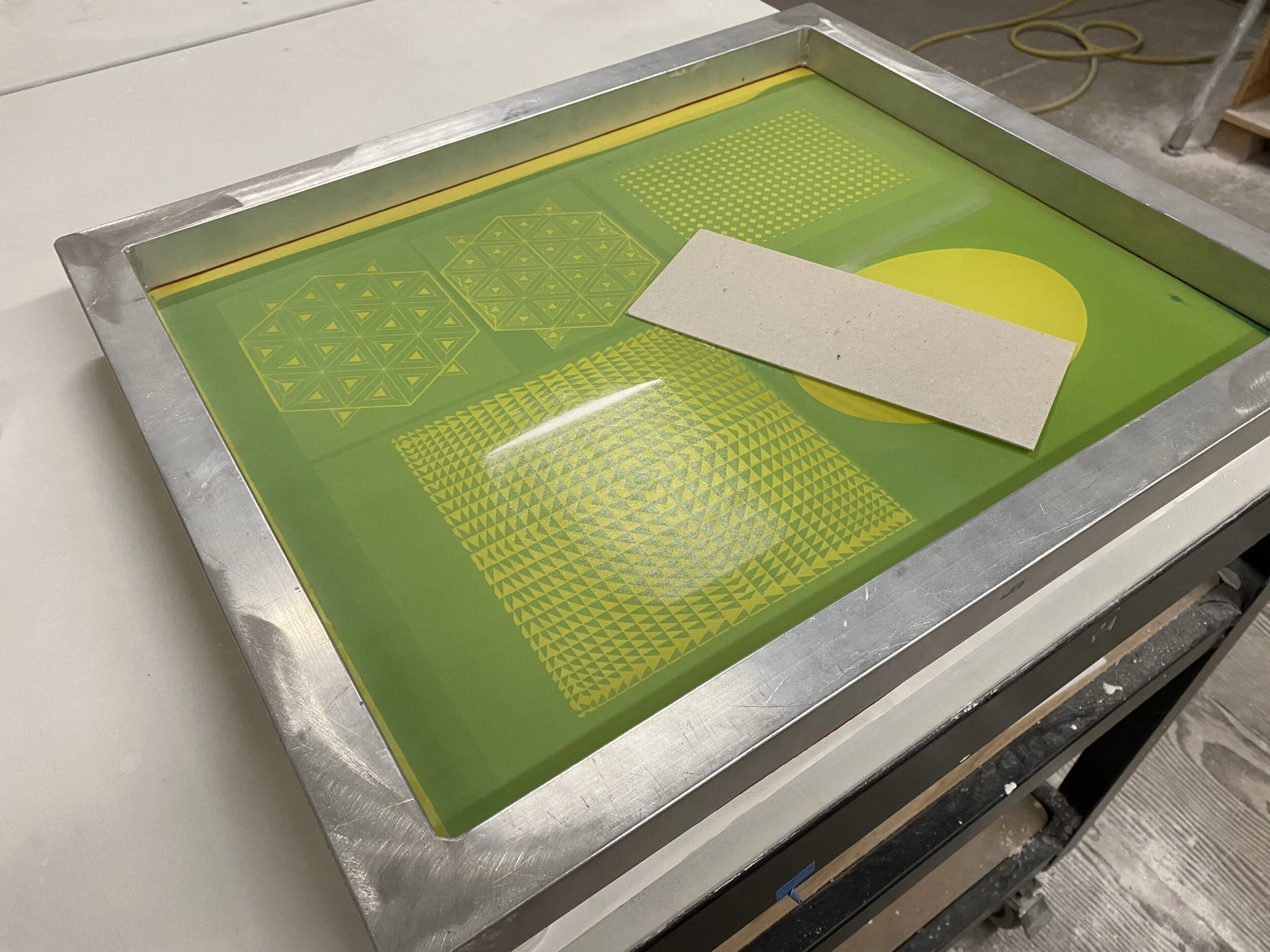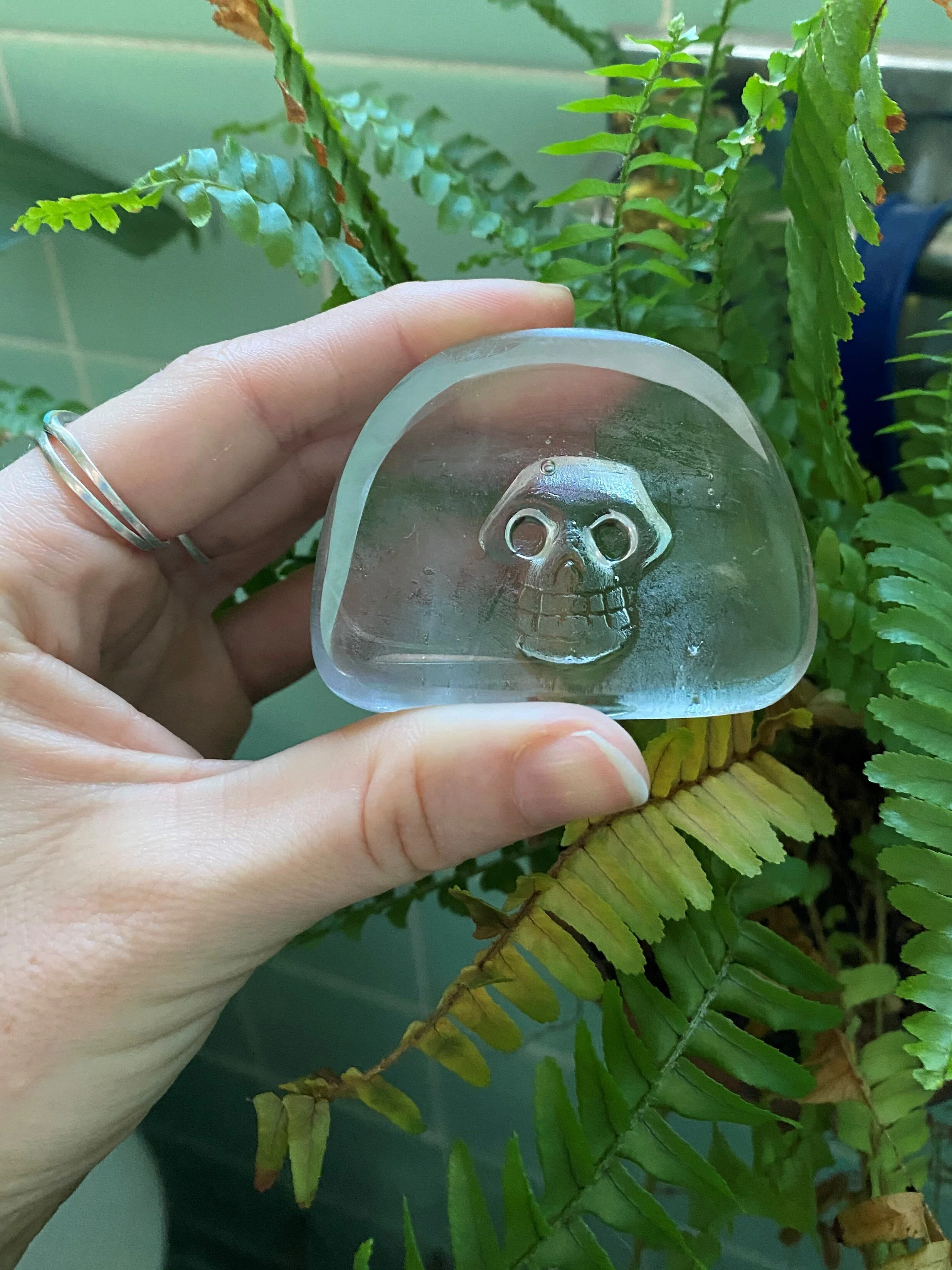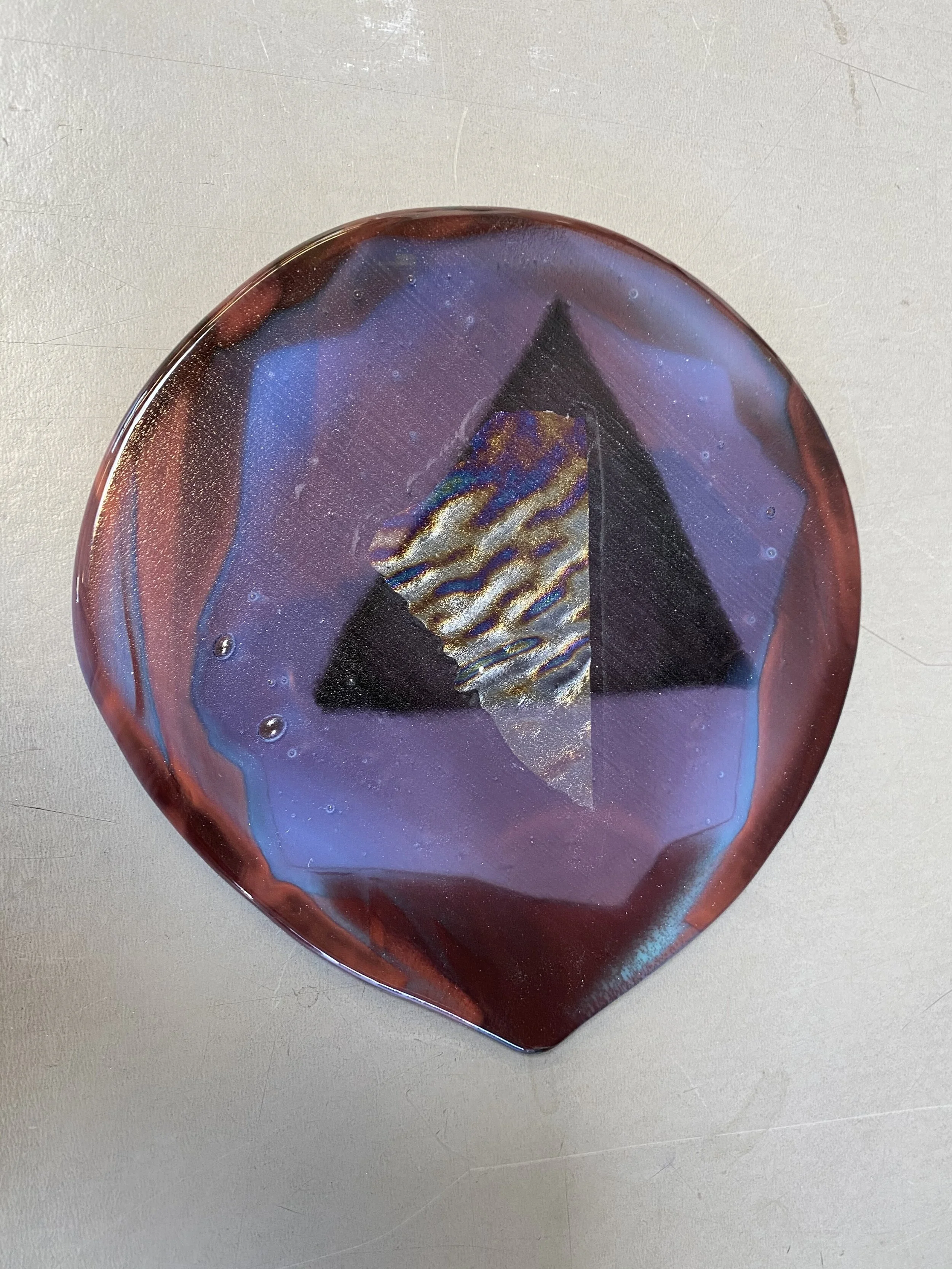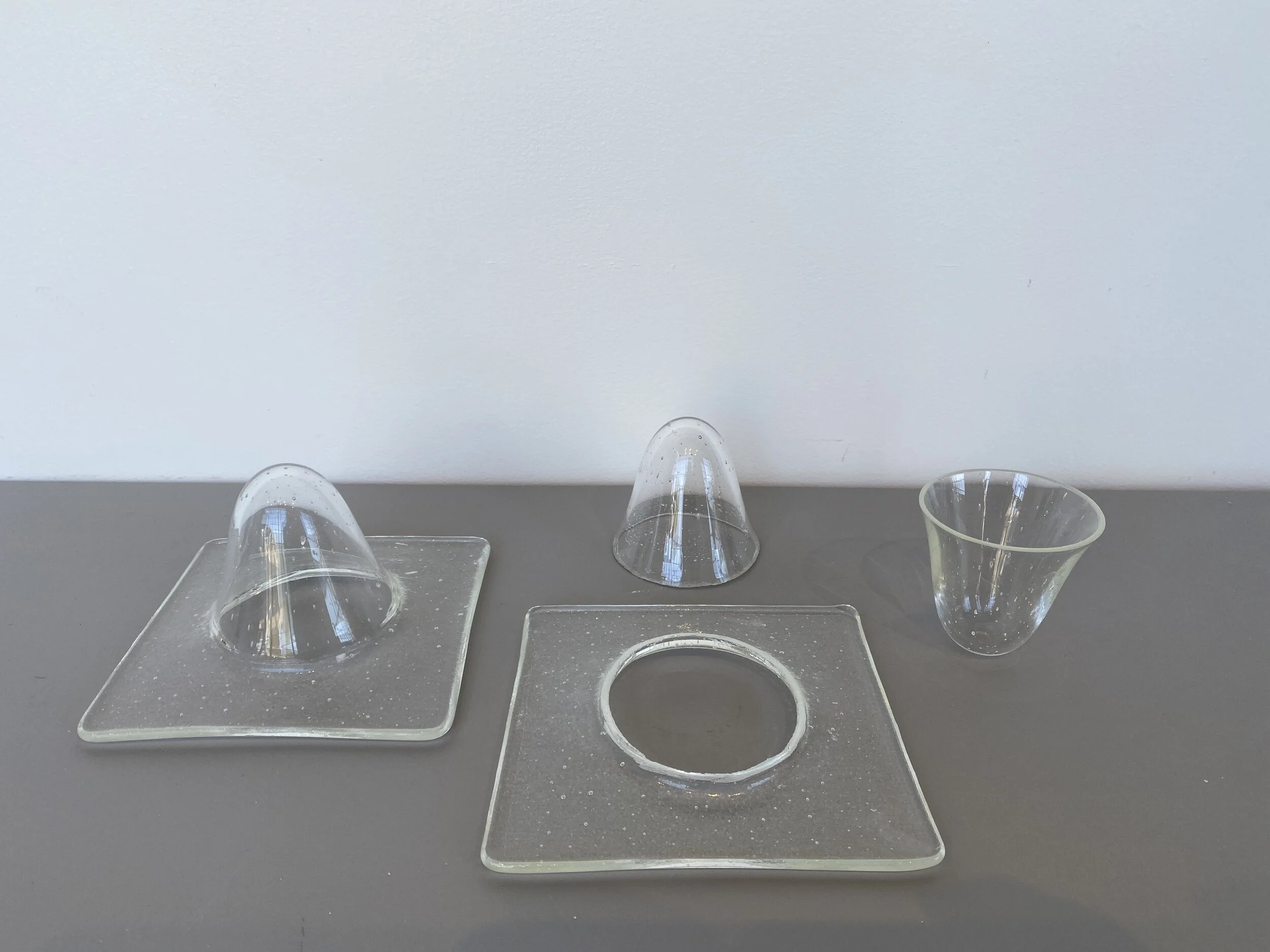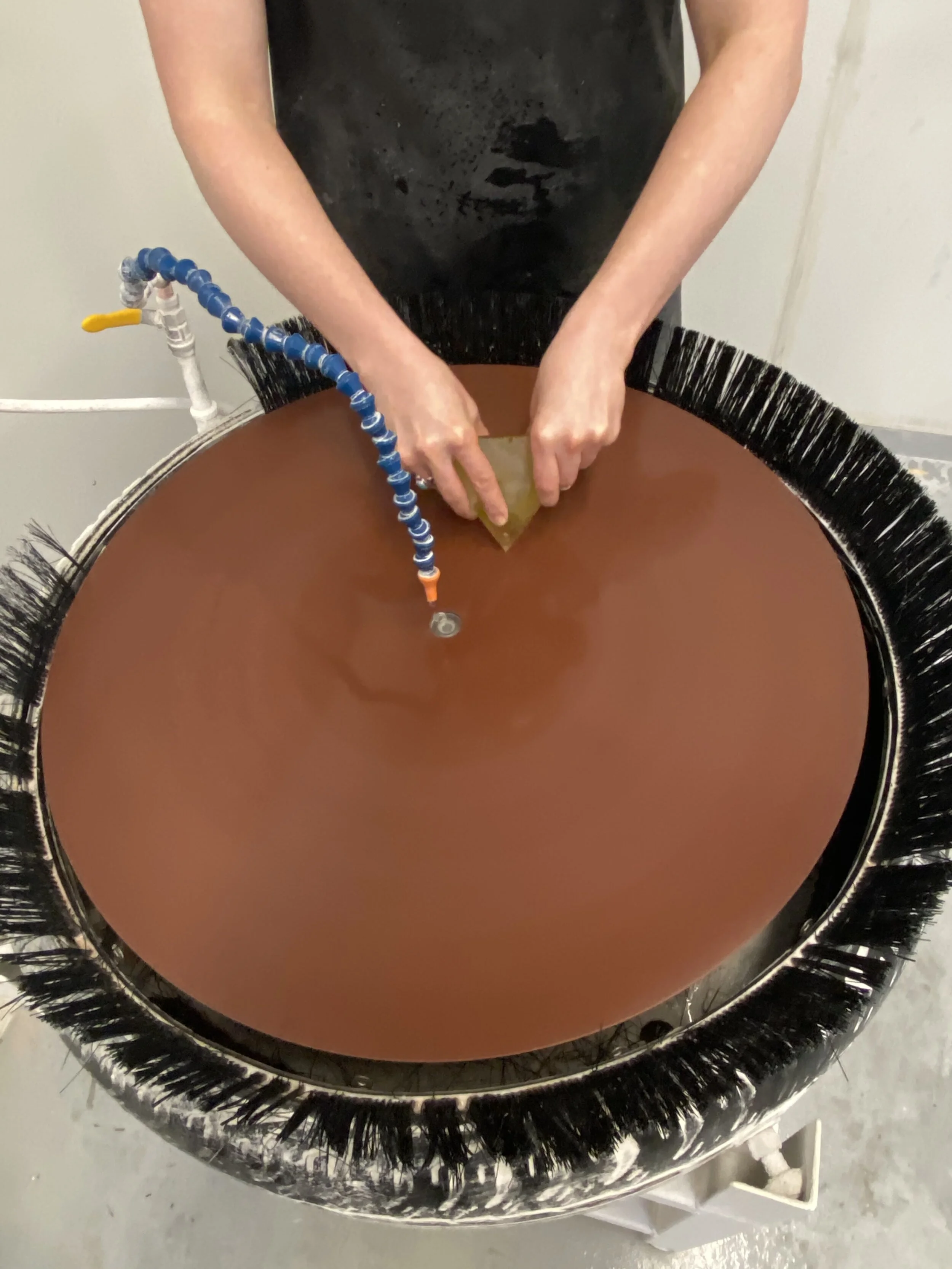Tell me more about your glass work
A lot of the creations on this website are made of kiln glass - I use Bullseye Glass because of their beautiful array of colors and textures AND easy compatibility. Because I delight in knowledge and education this page is to serve as an overview of some fusing techniques, and to give non-fusers an idea of my process.
What is kiln glass?
Kiln-glass. Kilnforming. Fusing. All these are referring to the same material and process - a special kind of glass designed to be manipulated by heatwork in a kiln. There are many different kiln processes that you can use to transform the glass with a variety of results: You can cast a solid 3D object, fuse and slump a set of dishes, or create a textured piece for a wall or window… just to name a few of the endless possibilities.
Glass glass glass
Some of my favorite techniques include casting, dropouts, and powder printing. These are all multi-step processes that take days to complete. If you are interested in learning more about these techniques check out the behind the scenes page as I will be diving into particular projects.
***
I teach classes
Teaching is my passion. I have taught many kiln glass classes at the Bullseye Resource Center in the Bay Area ranging in all the topics featured on this website. Bullseye in person classes are currently not an option but I am happy to teach techniques one-on-one or in a very small group.
Interested in private workshops or consultations? Please reach out via the contact page
***
Want to know more? Keep reading below as we identify different types of fusing:
Powder printing
The same type of screen that is used for screen printing t shirts and posters can also be used to print with glass powder! Another option is printing enamel ink onto the glass.
glass casting
To cast an item in glass you must first make a mold of the object. The glass is then loaded into the mold and the mold goes into a kiln to melt the glass into the desired shape. After the firing, the mold is cracked away like an eggshell to reveal the glass object inside.
pattern bar
Layers of glass are arranged and fused together making a solid brick. Once that brick of glass is fused, you cut it open and reveal the pattern inside. The pattern is often “butterflied” as you see here.
murrine
Murrine are essentially little designs made in glass. A rod of glass is pulled and cut open to reveal the pattern within. The rod is typically designed with this pattern in mind and then pulled from a vitrigraph kiln.
Compression
This is the hottest thing in the fusing world right now. Compression involves stacking sheet glass and then smashing it all together in the kiln with a lot of heat and a lot of bricks. The resulting piece is quite thin and merges the colors together in an unpredictable way.
Dropouts
Dropouts are the only way to may a tall and thin vessel with kilnforming. This picture shows you three stages of the process which I will quickly explain: After making a blank the glass is elevated on a doughnut shaped mold. The glass then stretches through the center of the “doughnut hole” which you observe until the desired shape is reached. The vessel is then cut off the rim and coldworked to give it a smooth edge.
Coldworking
There is a lot more that you can do to the glass once it comes out of the kiln. Various tools for cutting, grinding, and shaping the glass in its “cold state” is known as coldworking. Here you see one of my favorite tools - the lap wheel - which can also be used to shape and refine stone.
kilncarving
To create a relief design the glass can be “carved” with layers of ceramic fiber paper. You can also manipulate the texture of the surface of the glass using this method.
slumping
Glass can be “slumped” into or over the shape of a mold. The process of slumping stretches the glass to take on the shape of the mold like a bowl or dish.
stained glass
OK stained glass is NOT fusing, but the same glass for fusing can be used to make a stained glass piece. AND you can encorporate fused glass elements into stained glass. This piece features a fused element - the golden strip was fused onto the black sheet glass before being foiled and soldered.
